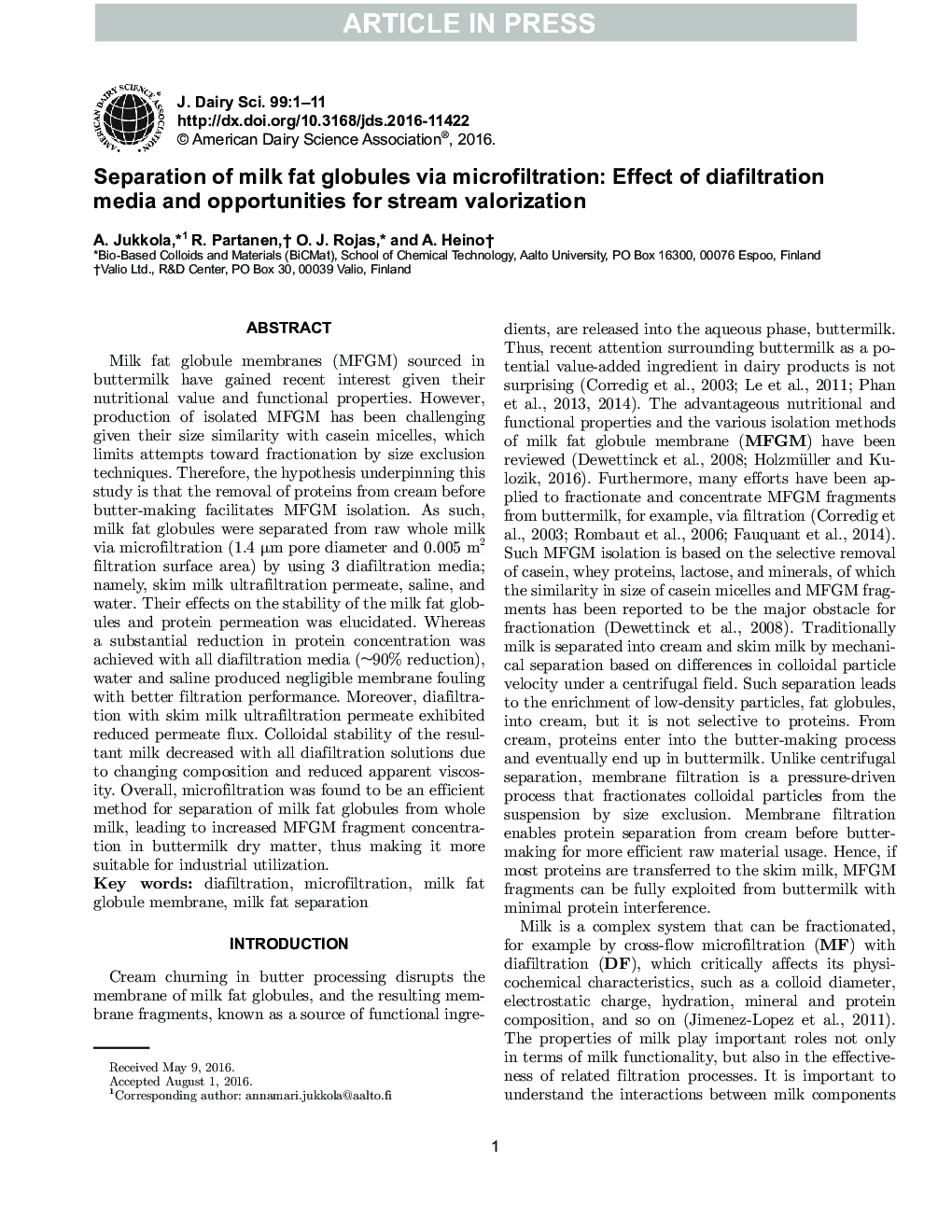| Article ID | Journal | Published Year | Pages | File Type |
|---|---|---|---|---|
| 5542643 | Journal of Dairy Science | 2016 | 11 Pages |
Abstract
Milk fat globule membranes (MFGM) sourced in buttermilk have gained recent interest given their nutritional value and functional properties. However, production of isolated MFGM has been challenging given their size similarity with casein micelles, which limits attempts toward fractionation by size exclusion techniques. Therefore, the hypothesis underpinning this study is that the removal of proteins from cream before butter-making facilitates MFGM isolation. As such, milk fat globules were separated from raw whole milk via microfiltration (1.4-µm pore diameter and 0.005-m2 filtration surface area) by using 3 diafiltration media; namely, skim milk ultrafiltration permeate, saline, and water. Their effects on the stability of the milk fat globules and protein permeation was elucidated. Whereas a substantial reduction in protein concentration was achieved with all diafiltration media (~90% reduction), water and saline produced negligible membrane fouling with better filtration performance. Moreover, diafiltration with skim milk ultrafiltration permeate exhibited reduced permeate flux. Colloidal stability of the resultant milk decreased with all diafiltration solutions due to changing composition and reduced apparent viscosity. Overall, microfiltration was found to be an efficient method for separation of milk fat globules from whole milk, leading to increased MFGM fragment concentration in buttermilk dry matter, thus making it more suitable for industrial utilization.
Related Topics
Life Sciences
Agricultural and Biological Sciences
Animal Science and Zoology
Authors
A. Jukkola, R. Partanen, O.J. Rojas, A. Heino,
